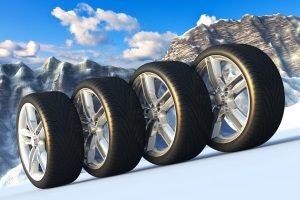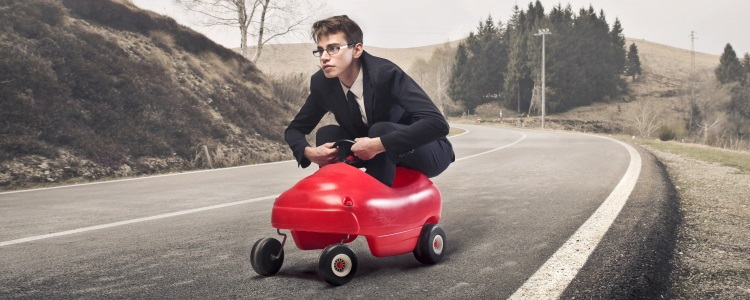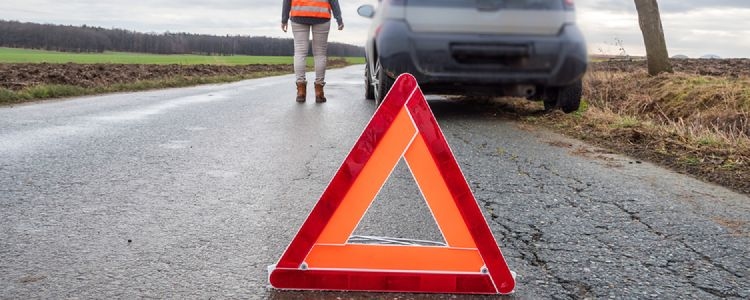The first snowfall of the year has already hit many areas of the country, and if you haven’t prepared your car for winter yet, now’s the time to do it. If you’re looking to lease or buy a vehicle just as winter begins, you might want to consider some additional features that make driving through snow easier.
Top 5 Features for Winter Driving
When you’re looking into cars, it’s important to keep in mind where you live and the kind of winter weather your area typically experiences. How unpredictable is it, and what features should you look for to prepare your vehicle for the winter weather that comes its way? If you experience all four seasons, you know how important it is to have a car that can handle unexpected harsh conditions.
Whether you’re looking at vehicles or hoping to improve the performance of your current car, consider these five features that make winter driving more bearable:
 1. Winter tires
1. Winter tires
The rubber in winter tires is softer and more flexible than the rubber in all-season and performance tires. They’re engineered to adjust to the road in colder conditions and maintain better traction on icy, snowy, or slushy roads. You should switch out your all-season tires to winter tires if you live in an area that’s known for getting hit hard with snow and ice. Even if the weather is unpredictable during winter, it’s better to be safe than sorry.
2. All-wheel drive
All-wheel drive (AWD) spreads the power to all four wheels to improve traction and stability. Front-wheel drive and rear-wheel drive only distribute power to two wheels, which can limit traction and stability. Depending on the vehicle you have and how advanced its AWD system is, it can transfer power from the wheel(s) that’s slipping to those that have traction, making it easier to regain control. While AWD can help you out with traction and control, it doesn’t add any extra braking assistance, so make sure you remain cautious about slowing down.
3. Anti-lock braking system
Traditional braking systems lock tires in place, and if you’re driving on icy or wet conditions, you could experience a loss of traction and extreme skidding. With anti-lock brakes, instead of clamping down, the system pumps brakes quickly, allowing you to maintain control. This feature is standard on all cars built after September 1, 2013, but it can’t be added to vehicles without the feature and built prior to that date.
4. Stability control
Traction control is important, but so is stability. Traction control monitors when a wheel or wheels are slipping, while stability control uses a sensor to direct sideways motion. Once the car hits ice and slides, the stability control kicks in to help assist the driver get back to driving in a straight line. The main goal of stability control is to stop the wheels from spinning in the event they catch any ice or hydroplane. Like ABS, stability control is standard on all vehicles built after September 1, 2013, but can’t be retro-fitted.
5. Remote start and heated seats
Safety should be a number one priority during winter driving, but once you have your safety features figured out, you should think about comfort. Heated seats and remote start are great for pre-heating the car and comfy driving. Push the button, and let the defrosting and warming process begin, all from the comfort of your home.
Picking the Best Car for Snow Season
If you’re looking to buy a vehicle that’s better suited for winter weather, what should you be looking for besides the five features listed above? One thing you need to consider is ground clearance, especially if the area you live in gets a few inches or even feet of snow annually. Ground clearance is the distance between the undercarriage of a vehicle and the ground. The more clearance you have, the more space you have.
Most sedans and cars have low clearance – usually four to six inches – and while some can handle heavy snow and icy conditions, they pose a greater risk for being stuck. SUVs, trucks, and crossovers are better options with higher ground clearance – an average of six to eight inches – and are less likely to get stuck. A few SUVs and trucks have a height-adjustable suspension, which means you can increase ground clearance if you need to.
The Bottom Line
Winter driving isn’t fun, and if you live in an area that gets hit hard with snow and ice, you need to make sure your vehicle is equipped to handle these harsh conditions. If you’re looking to finance a car that can take on winter better, Auto Credit Express can connect you with a dealership that can help buyers with less than perfect credit.
We work with dealers all across the country that are teamed up with lenders that specialize in bad credit auto loans. We'll work on connecting you with a dealership in your area if you start the process by submitting our free and easy auto loan request form.
















